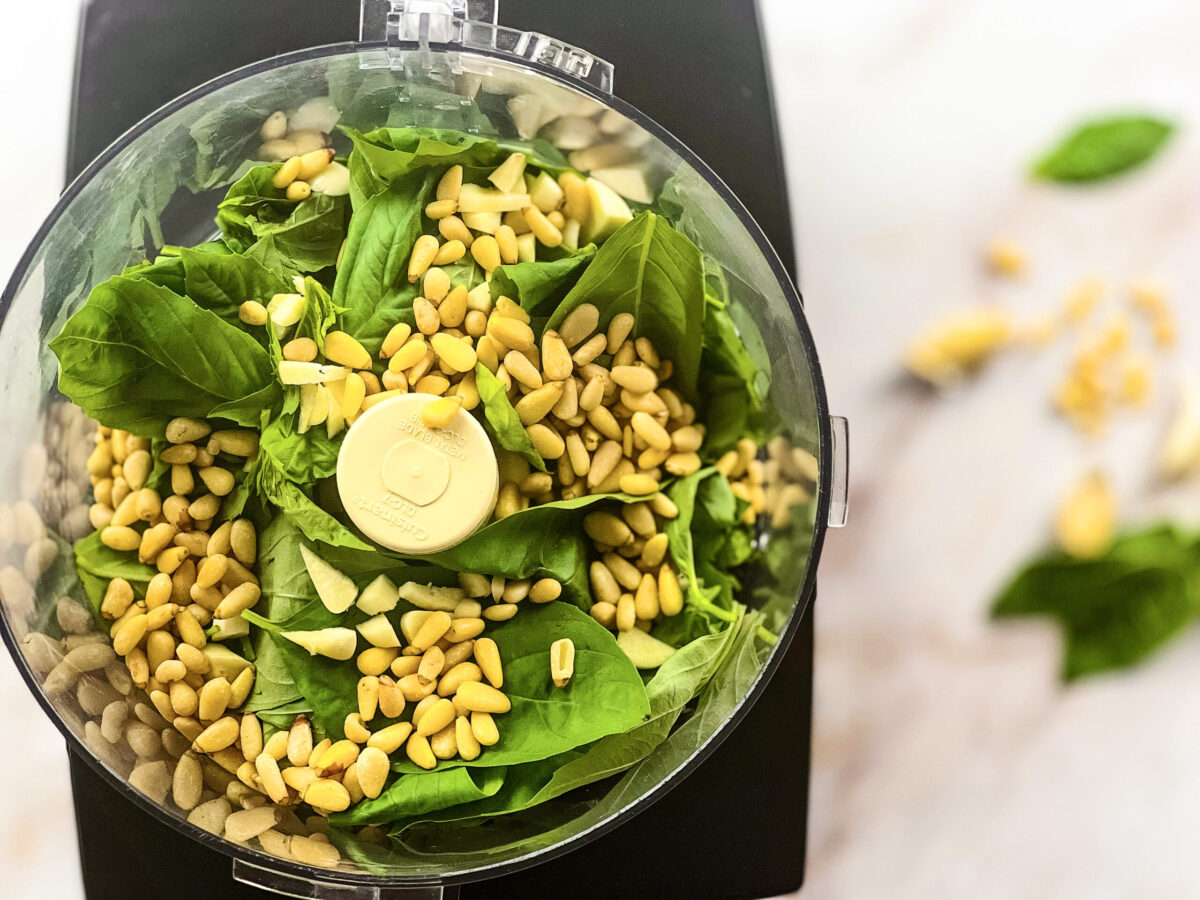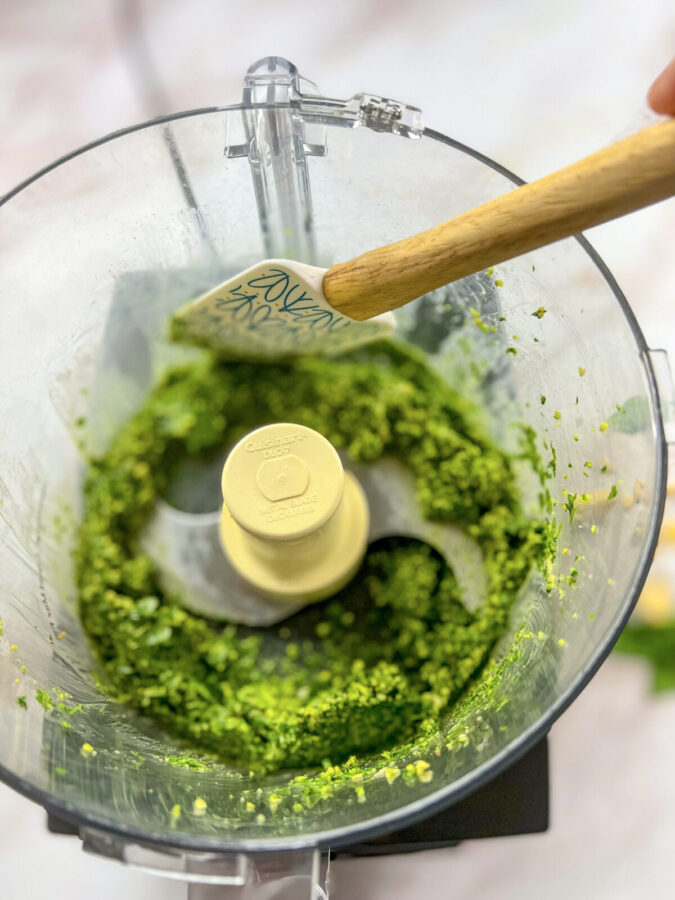Ready to bring the true flavors of Italy into your kitchen? My pesto sauce recipe is not only authentic but also easy to follow! Join me, and let’s make something delicious together!
Table of Contents
A flavor-packed Genovese pesto sauce can enhance any dish it touches, from bringing zing to your morning eggs to becoming the heart of your pasta dishes. While store-bought options are plentiful, nothing compares to homemade pesto sauce. You can create an incomparable, fresh, robust sauce in just five minutes. As a dedicated pesto enthusiast, I’ve tried numerous recipes, but this one holds a special place in my heart. Its perfect balance of ingredients and delightful texture sets this authentic Genovese pesto sauce apart. Try it, and let me know your experience!
The Origins of Pesto: A Trip to Genoa
The heritage of pesto sauce hails from the vibrant streets of 13th-century Genoa, a Northern Italian hub renowned for its maritime trade. This classic Italian dish has since seasoned the culinary world with its unique flavor. At the heart of authentic Genovese pesto lies Genoese basil, grown in Liguria, notable for its delicate aroma and sweetness. The name ‘pesto’ stems from ‘pestare,’ Italian for ‘to crush,’ reflecting the traditional crafting using a marble mortar and wooden pestle. This homemade Genovese pesto isn’t just a delicacy; it’s a timeless Italian culinary tradition, a simple pasta sauce that has evolved into a worldwide favorite, with the traditional recipe still cherished amidst modern adaptations.
Fresh Pesto Recipe Ingredients
- Pine Nuts (Slightly Toasted): Introduce a nutty and earthy undertone, providing depth to the pesto.
- Basil Leaves (Cleaned and Dry): The star of the show, fresh basil leaves bring a bright, aromatic, and herbaceous flavor to the pesto.
- Garlic Cloves (Roughly Chopped): Add a pungent and savory kick, enhancing the overall robustness of the pesto.
- Extra Virgin Olive Oil (Good Quality): A smooth and luscious binder brings a fruity and rich quality to the pesto.
- Fresh Parmesan Cheese: Grated Parmesan cheese adds a salty and savory note, enhancing the umami flavor of the pesto.
- Salt and Black Pepper: To taste, these seasonings balance and elevate the flavors, providing the perfect savory kick.
The Versatile Uses of Pesto Sauce
Pesto sauce’s adaptability is unmatched. Whether you’re enhancing your pasta, gnocchi, or lasagna, giving your minestrone a flavor upgrade, pesto is your ally. It also works as a brilliant marinade for fish and chicken and complements fried eggs. Furthermore, the secret ingredient gives many Caprese sandwiches their unique taste.
Keeping Your Pesto Fresh
A less-than-pleasant encounter with bitter pesto often stems from over-processing in a food processor. As the blades spin at high speeds, they heat the basil, causing it to oxidize and develop a bitter flavor. Avoid this by adopting a careful and gentle processing approach.
- Fresh is Best: Always use fresh basil for your pesto. Aging or wilted leaves can often result in a bitter flavor. Choose basil leaves that are bright and green, without any dark spots or yellowing. Blanch Your Basil: Blanching your basil leaves in boiling water before an ice bath can help maintain the bright green color and reduce bitterness. While this step is optional, it can make a significant difference.
- Pulse, Don’t Process: Use the pulse setting on your food processor for better control over the consistency. This helps to avoid overheating the basil and preserves its fresh, sweet flavor.
- Love the Lumps: Embrace the rustic charm of homemade pesto. It’s perfectly acceptable for your pesto to be chunky – some visible pieces of basil can enhance the texture and retain the vibrant sauce’s true essence.
- Traditional Approach: If you have the time and want to follow tradition, use a marble mortar and wooden pestle. While this method may be more laborious, it prevents overheating and results in a beautifully textured and flavor-rich pesto.
Preparation





Adjust the seasoning as needed!
Ingredients:
Adjust Servings
| ⅓ cup pine nuts | |
| 2 cups basil leaves (cleaned and dry) | |
| 3 garlic cloves (roughly chopped) | |
| ½ cup extra virgin olive oil | |
| ½ cup parmesan cheese | |
| ½ teaspoon salt | |
| ½ teaspoon black pepper |
Preparation
Recipe Tips & Suggestions
Nutrition Information
The information shown is an estimate provided by an online nutrition calculator. It should should not be considered a substitute for a professional nutritionist's advice.
See our full nutrition disclosure here.








I would love to hear your experience!
I’d love to hear about your pesto-making adventure! Please leave a comment below sharing your experience or any variations you tried. Your feedback helps us and our community of readers!